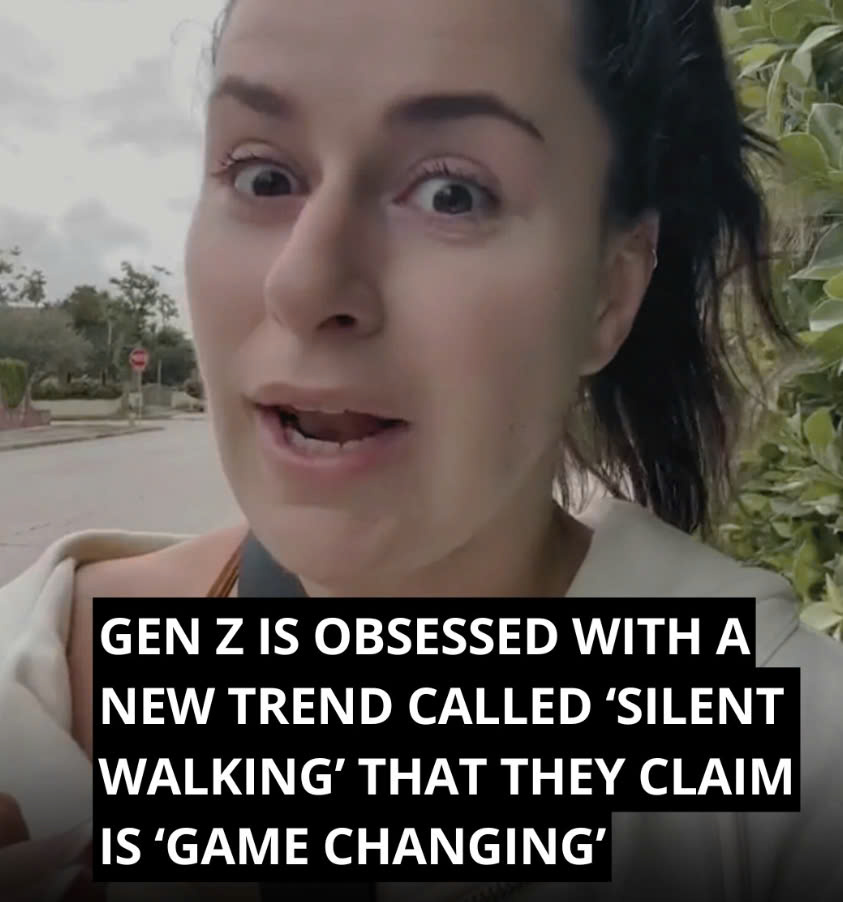In the fast-moving world of social media, a new trend has taken hold of Gen Z: silent walking. What began as an accidental concept introduced by TikToker Mady Maio has grown into a popular movement. Silent walking is exactly what it sounds like—taking a walk without any technology, no phones, no headphones, and no music. Something once considered an everyday activity has now been labeled as a “trend,” sparking mixed reactions online. But why has this simple act of walking without distractions stirred up so much conversation?

What Exactly is Silent Walking?
Silent walking is straightforward—walking without the distraction of technology. It asks people to leave their phones behind, turn off the music or podcasts, and simply focus on the present moment. TikToker Charlie Health described silent walking as a way to “focus on mindfulness and connect with our bodies.” She pointed out that, although the idea of walking in silence may seem dull or anxiety-inducing at first, it can actually improve mental health by lowering symptoms of depression and anxiety. Research shows that even light exercise, like walking, provides mental health benefits—especially when it’s done without the distractions of technology.
The Mental Health Benefits of Silent Walking
Supporters of silent walking often highlight its mental health benefits. According to Charlie Health, this practice is more than just a fleeting social media trend—it’s a method for promoting mindfulness and mental clarity. Walking in silence allows people to become more aware of their physical sensations, thoughts, and emotions, which can help them feel more in tune with their bodies. In today’s tech-heavy world, this return to simplicity offers a rare chance to reduce stress, improve focus, and enhance emotional well-being. For those who struggle with anxiety, silent walking can be especially beneficial. It helps ground them in the present moment, offering a break from the constant distractions and noise of modern life.
Mixed Reactions Online
Like any viral trend, silent walking has divided opinions online. Some TikTokers have pointed out the irony of labeling something as ordinary as walking as a “trend.” One user joked, “This used to be the norm like 20 years ago,” calling attention to how what was once a standard part of daily life is now considered novel. However, others have praised the trend for its positive impact on mental health. One user claimed that silent walking “actually changed” their life, while others shared how walking without music made them feel more connected to nature and their surroundings, describing the experience as “beautiful.” Of course, not everyone is convinced, with some brushing off the concept entirely. “It ain’t ‘silent walking,’ it’s just walking,” one user quipped.
The Origins of Silent Walking
While Mady Maio’s video might have brought silent walking into the public eye, New York influencer Arielle Lorre reportedly coined the term earlier this year. Lorre has credited silent walking with heightening her senses, allowing her to “smell everything” and “hear everything” around her. She described the experience as grounding, likening it to other mindfulness trends like the “hot girl walk.” Lorre wants silent walking to become a widespread practice for “girls, guys, or whoever,” promoting it as a way to shift the focus from fitness to mental wellness. As silent walking grows in popularity, it’s becoming a symbol of stepping away from the overwhelming noise of technology and reconnecting with the present moment.
Is Silent Walking Just a Passing Fad?
At its core, silent walking is simply about taking a walk without distractions—something that used to be second nature before smartphones took over our lives. For some, the idea of branding this basic activity as a “trend” seems unnecessary. However, silent walking may represent more than just another social media craze. It reflects a growing desire to disconnect from technology and reconnect with ourselves. In a world that’s constantly bombarding us with notifications and information, the appeal of taking a quiet walk is undeniable. Whether you view it as a life-changing practice or just another internet fad, silent walking speaks to larger conversations about mindfulness, mental health, and the need to find moments of peace in an increasingly hectic, digital world.
Conclusion: The Power of Silent Walking
Silent walking may have started as a TikTok trend, but it’s quickly becoming a cultural symbol. In a time when we are constantly plugged into our devices, this practice offers a refreshing opportunity to unplug, recharge, and reconnect with our surroundings. Whether you see silent walking as a game-changing mindfulness exercise or simply a brief escape from the noise of technology, its benefits are clear. It taps into the growing movement towards mental wellness, encouraging us all to find peace in the simplicity of a quiet walk.



